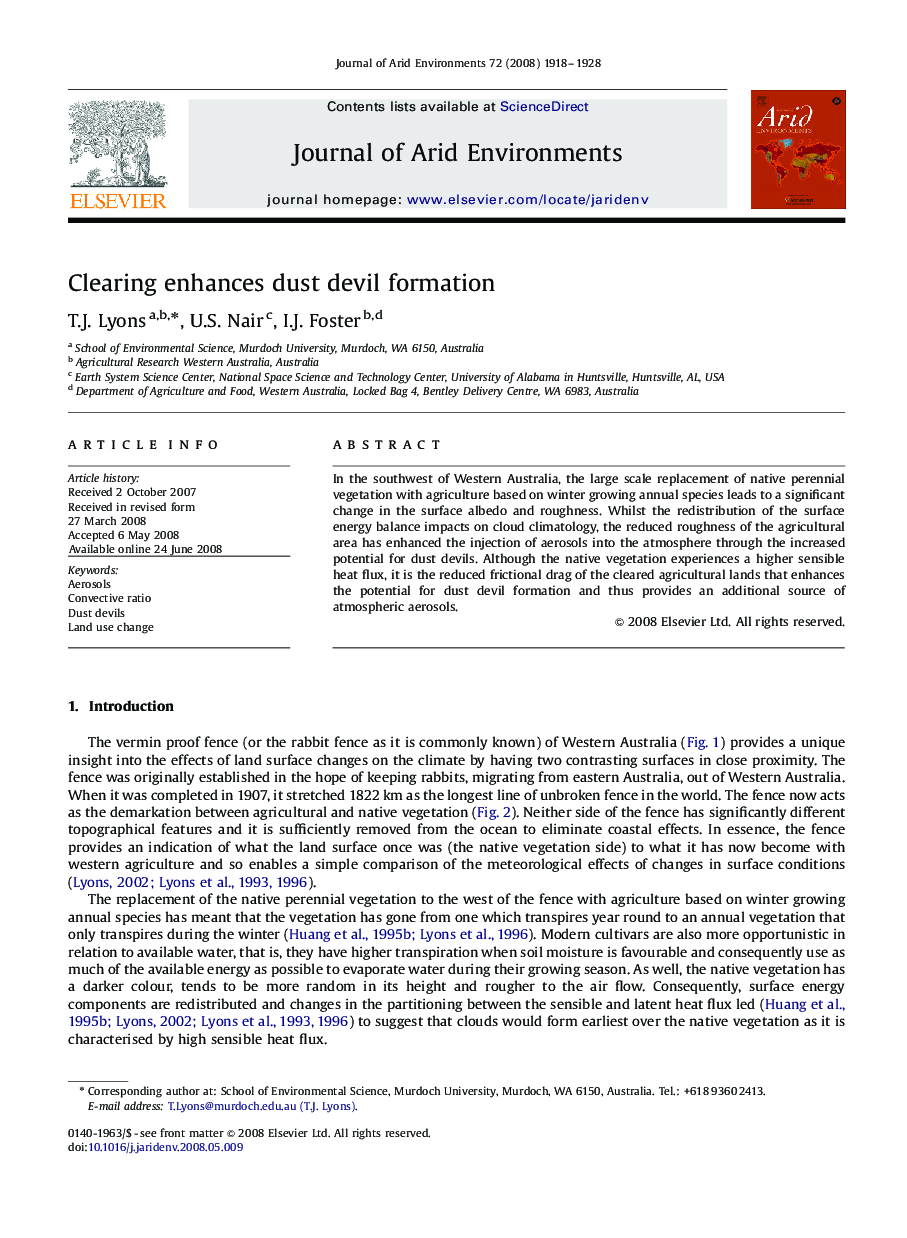| Article ID | Journal | Published Year | Pages | File Type |
|---|---|---|---|---|
| 4394386 | Journal of Arid Environments | 2008 | 11 Pages |
Abstract
In the southwest of Western Australia, the large scale replacement of native perennial vegetation with agriculture based on winter growing annual species leads to a significant change in the surface albedo and roughness. Whilst the redistribution of the surface energy balance impacts on cloud climatology, the reduced roughness of the agricultural area has enhanced the injection of aerosols into the atmosphere through the increased potential for dust devils. Although the native vegetation experiences a higher sensible heat flux, it is the reduced frictional drag of the cleared agricultural lands that enhances the potential for dust devil formation and thus provides an additional source of atmospheric aerosols.
Keywords
Related Topics
Physical Sciences and Engineering
Earth and Planetary Sciences
Earth-Surface Processes
Authors
T.J. Lyons, U.S. Nair, I.J. Foster,
